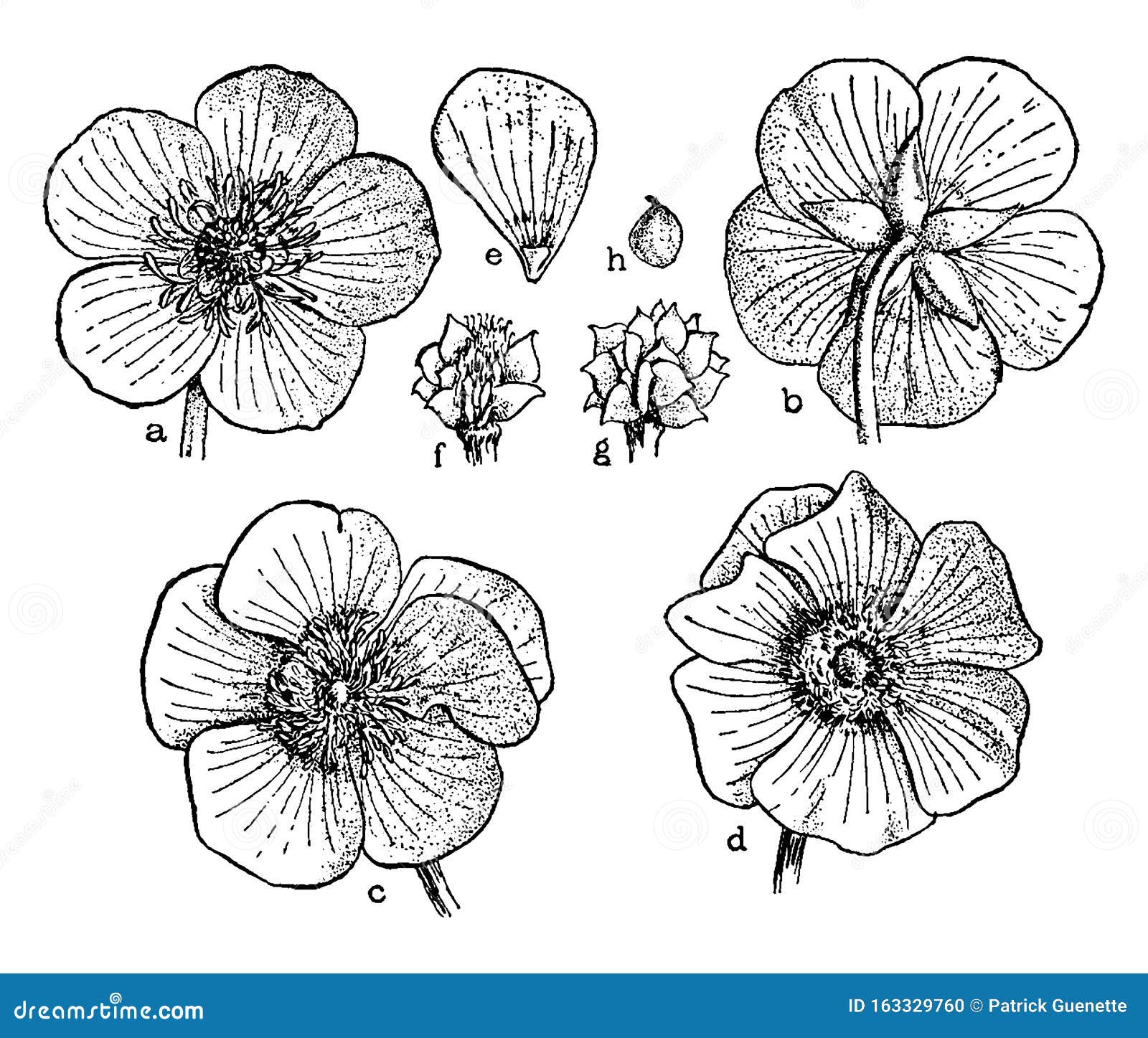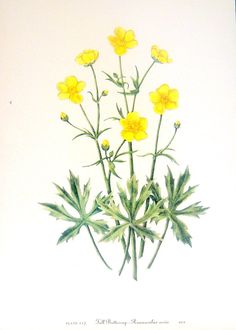

Unable to see, Coyote made eyes from the buttercup. In the legend, Coyote was tossing his eyes up in the air and catching them again when Eagle snatched them. In the interior of the Pacific Northwest of the United States, the buttercup is called "Coyote's eyes"- ʔiceyéeyenm sílu in Nez Perce and spilyaynmí áčaš in Sahaptin.
Buttercup flower diagram skin#
In ancient Rome, a species of buttercup was held to the skin by slaves attempting to remove forehead tattoos made by their owners. A popular children's game involves holding a buttercup up to the chin a yellow reflection is supposed to indicate a fondness for butter. The common name buttercup may derive from a false belief that the plants give butter its characteristic yellow hue (in fact it is poisonous to cows and other livestock). This probably refers to many species being found near water, like frogs. The genus name Ranunculus is Late Latin for "little frog", the diminutive of rana. The fruits (in this case called achenes) may be smooth or hairy, winged, nobby or have hooked spines. įruit Seed head of Ranunculus showing developing achenes. The flash aids in attracting pollinating insects and temperature regulation of the flower's reproductive organs. The petals of buttercups are often highly lustrous, especially in yellow species, owing to a special coloration mechanism: the petal's upper surface is very smooth causing a mirror-like reflection. The sometimes few but mostly many green or yellow carpels are not fused and are also arranged in a spiral, mostly on a globe or dome-shaped receptacle. Anthers may be few, but often many are arranged in a spiral, are yellow or sometimes white, and with yellow pollen. The hermaphrodite flowers are single or in a cyme, have usually five (but occasionally as few as three or as many as seven) sepals and usually, five yellow, greenish or white petals that are sometimes flushed with red, purple or pink (but the petals may be absent or have a different, sometimes much higher number).Īt the base of each petal is usually one nectary gland that is naked or may be covered by a scale. The leaves lack stipules, have petioles, are palmately veined, entire, more or less deeply incised, or compound, and leaflets or leaf segments may be very fine and linear in aquatic species. In many perennial species runners are sent out that will develop new plants with roots and rosettes at the distanced nodes. Some species are popular ornamental flowers in horticulture, with many cultivars selected for large and brightly coloured flowers.ĭescription Flower of Ranunculus glaberrimus Plant īuttercups are mostly perennial, but occasionally annual or biennial, herbaceous, aquatic or terrestrial plants, often with leaves in a rosette at the base of the stem. Ranunculus species are used as food by the larvae of some Lepidoptera species including the Hebrew character and small angle shades. aquatilis, a third, intermediate leaf type occurs. They have two different leaf types, thread-like leaves underwater and broader floating leaves. The water crowfoots ( Ranunculus subgenus Batrachium), which grow in still or running water, are sometimes treated in a separate genus Batrachium (from Greek βάτραχος bátrakhos, "frog"). In ornamental gardens, all three are often regarded as weeds.īuttercups usually flower in the spring, but flowers may be found throughout the summer, especially where the plants are growing as opportunistic colonizers, as in the case of garden weeds. Two other species are also widespread, the bulbous buttercup Ranunculus bulbosus and the much taller meadow buttercup Ranunculus acris. The familiar and widespread buttercup of gardens throughout Northern Europe (and introduced elsewhere) is the creeping buttercup Ranunculus repens, which has extremely tough and tenacious roots. The genus is distributed in Europe, North America and South America. Members of the genus are known as buttercups, spearworts and water crowfoots. Ranunculus / r æ ˈ n ʌ ŋ k j ʊ l ə s/ is a large genus of about 1700 to more than 1800 species of flowering plants in the family Ranunculaceae. For other uses, see Buttercup (disambiguation).Įschscholtz's buttercup ( Ranunculus eschscholtzii)


For the variety of squash, see Buttercup squash. Redrawn and color: User:RoRo, Public domain, via Wikimedia Commons."Buttercup" redirects here. The ovary cross section is divided into five distinct locules. The gynoecium on the right is fully syncarpous with fusion of all parts (stigma, style, and ovary). A cross section of the ovary shows three sets of ovules. The gynoecium shown in the center is syncarpous, with fusion of the ovaries. A cross section of the ovaries shows the ovules inside.
Buttercup flower diagram free#
The illustrated gynoecium on the left has three free carpels. \): In an apocarpous gynoecium, the carpels are not fused together.


 0 kommentar(er)
0 kommentar(er)
